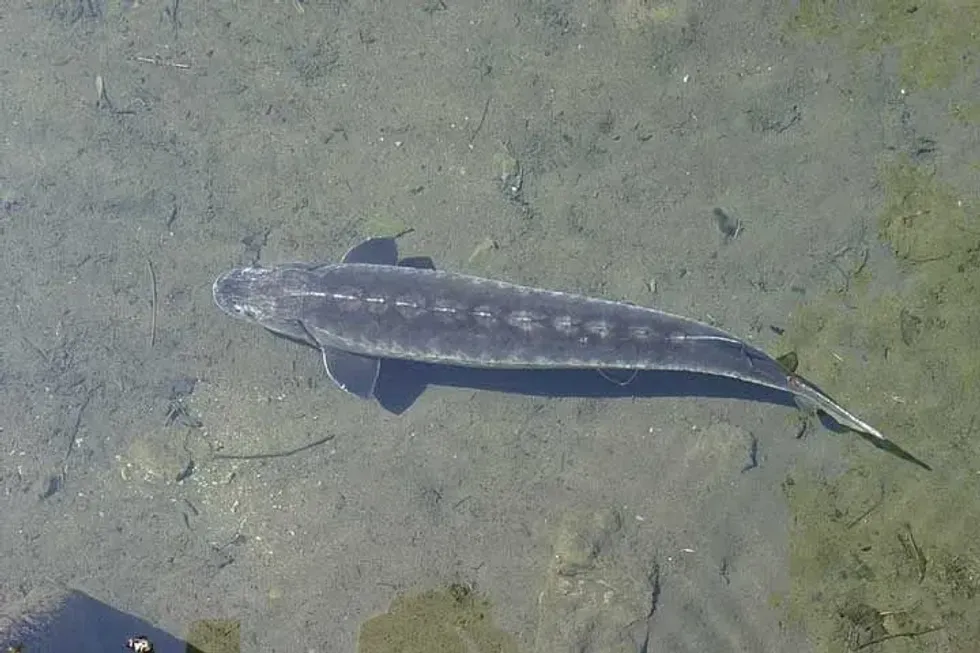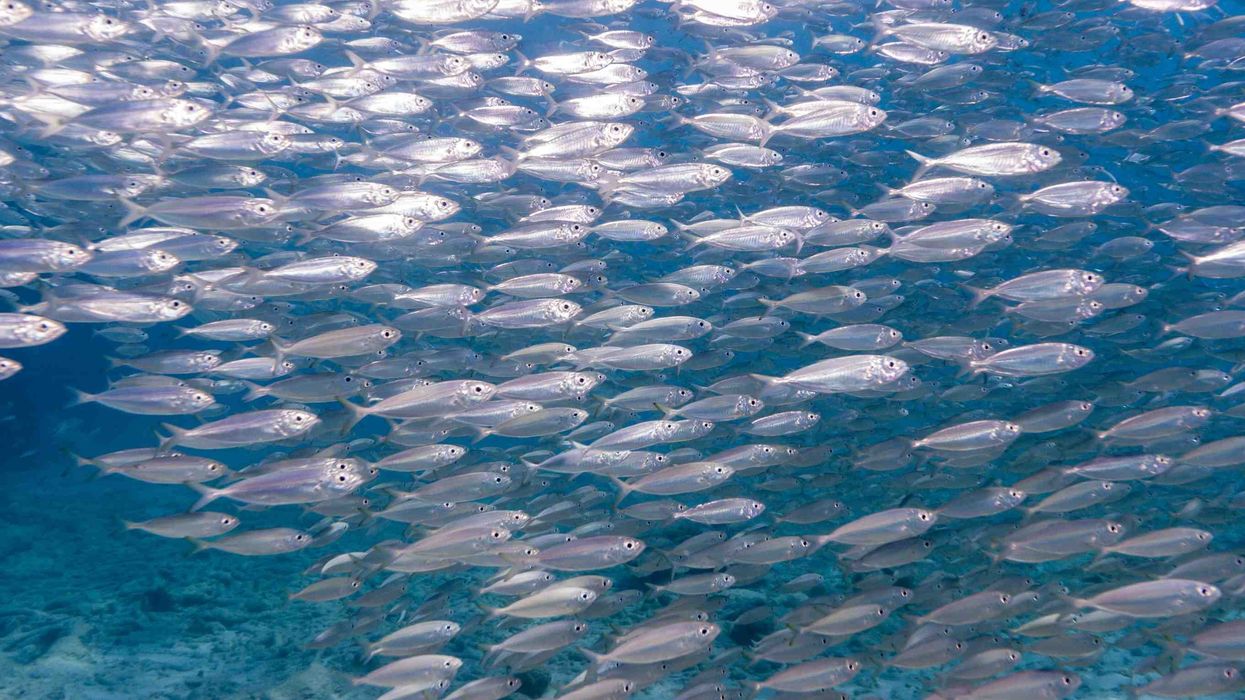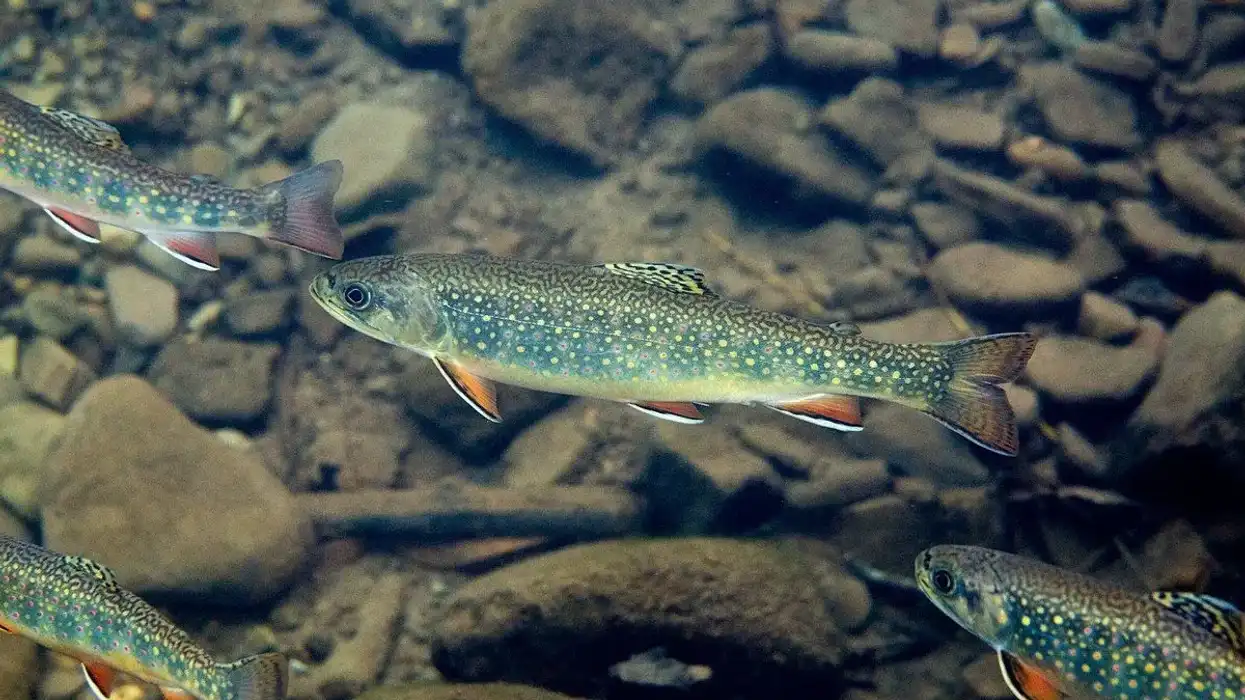Are you interested to know about ancient fish? If yes, then you will be thrilled to learn about sturgeons.
These fishes have been present on the earth for thousands of years and have survived until now. Here, we will talk about the shortnose sturgeon, a member of the sturgeon family present in North America.
The prehistoric and old look of this fish makes it look quite pleasing, and its body has five rows of bony plates on the outside. It is said that the sturgeon population must have existed even 4,000 years ago, as many fossils have been found.
It is currently considered an endangered species as per the Federal status. Hence, it is protected under the Endangered Species Act of 1973. In the U.S, the fish is found in many river systems, mainly limiting itself to the east coast.
A significant population is seen in the St John River in Florida. While in Canada, the population of this fish is found in New Brunswick.
This fish can live for a long time, and it has a distaste for bad water quality. Even though this fish can stay in salty water, the species seldom chooses to live in oceans. Learning shortnose sturgeon facts will give you an insight into how this fish behaves in its natural habitat.
If you like this article, check out silvery minnow facts and leafy seadragon facts to widen your knowledge.
Shortnose Sturgeon Interesting Facts
What type of animal is a Shortnose Sturgeon?
The shortnose sturgeon is a species of North American fish.
What class of animal does a Shortnose Sturgeon belong to?
The shortnose sturgeon belongs to the class Actinopterygii and to the genus Acipenser. This fish belongs to the family Acipenseridae that also contains the pallid sturgeons.
How many Shortnose Sturgeons are there in the world?
We aren't aware of the exact shortnose sturgeon populations, but it is estimated that about 26,000-55,000 individuals are living in the Hudson River. In comparison, the population in the Delaware River is limited to 5,000-15,000 fish.
The Connecticut River is said to have only 1,200 fish, and unfortunately, there are approximately fewer than 100 individuals left in the Merrimack River. Moreover, little to no population of this fish is left in the Chesapeake Bay.
Where does a Shortnose Sturgeon live?
The shortnose sturgeon is found on the eastern coast of North America. A significant population is found in the stretch from Saint John River in New Brunswick to the Indian river present in Florida.
Spawning can occur in areas like Saint John River, Bay of Fundy, and the Altamaha River. Rivers in South Carolina don't have a shortnose sturgeon population.
What is a Shortnose Sturgeon's habitat?
The shortnose sturgeon is regarded as a semi-anadromous fish that swims towards freshwater areas as its spawning habitat. Even though it can survive in marine habitats, this fish doesn't make it to the open oceans and prefers to stay in estuaries or bays. The main shortnose sturgeon habitat is seen in main river channels.
Who do Shortnose Sturgeons live with?
Not much is known about the way shortnose sturgeons live except for the fact that these fishes are on their own after hatching.
How long does a Shortnose Sturgeon live?
The shortnose sturgeon (Acipenser brevirostrum) is known for its long life, where the males can survive for 30 years, while the females can live up to 67-70 years of age.
How do they reproduce?
The shortnose sturgeons have an interesting reproduction, and the water quality of a river matters to the fishes. The females spawn every three years, while the males spawn every year.
After hatching, the early life stages are spent in freshwater, and the fry later moves on to more brackish environments. The females can lay about 40,000-200,000 eggs which made the fish a delicacy to many people.
It takes 13 days for the eggs to hatch in the river, and as it is sticky, the eggs usually stick to other surfaces like rocks present in the river. It takes 9-12 more days for the fry to mature and swim towards deeper river channels.
What is their conservation status?
According to the International Union for Conservation of Nature (IUCN) Red List, the shortnose sturgeon (Acipenser brevirostrum) is currently put under the status of being a Vulnerable species. However, the Federal status and the National Marine Fisheries Service lists shortnose sturgeon as an endangered species.
Shortnose sturgeon have become endangered species or vulnerable species mainly due to the building of dams, water quality, and habitat destruction.
Shortnose Sturgeon Fun Facts
What do Shortnose Sturgeons look like?

The shortnose sturgeons look quite similar to the Atlantic sturgeon, except for their short length and a more cylindrical body. It is also often confused with juveniles of Atlantic sturgeons, and people may pick it from a river. These fishes are mainly known for the five rows of scutes or bony plates present on its body.
The soft body of the shortnose sturgeons is mainly made of cartilage. As there are no scales on its body, the species have a slimy skin texture.
The dorsal side of its body has an olive-yellow color that can also seem gray or black. However, the belly is paler and can be white. This species is mostly known for its iconic snout.
How cute are they?
These prehistoric-looking endangered fish may not appear cute to everybody, but its short nose does make it look adorable.
How do they communicate?
Not a whole lot is known about the communication practices of shortnose sturgeons. However, like other sturgeon fishes, the sturgeon shortnose also drags the barbels present in front of its mouth on the ground.
As bottom feeders, this helps it to find the right food. As non-visual feeders, these fishes may also use a similar sensory perception to communicate with the other fishes present in their vicinity.
How big is a Shortnose Sturgeon?
The average shortnose sturgeon length is around 30-48 in (76.2-121.9 cm). This length can differ according to the location of the fish. It is also considered to be smaller than other sturgeon species. Compared to the shortnose sturgeon, the white sturgeon attains an average length of 82.6-240.1 in (209.8-609.8 cm).
How fast can a Shortnose Sturgeon swim?
Not much is known about the overall swimming speed of this fish.
How much does a Shortnose Sturgeon weigh?
The average weight of the shortnose sturgeon (Acipenser brevirostrum) is around 15-25 lb (5.4-11.3 kg).
What are the male and female names of the species?
There are no separate names for the males and females of this sturgeon species.
What would you call a baby Shortnose Sturgeon?
A baby shortnose sturgeon is called a fry.
What do they eat?
The shortnose sturgeon (Acipenser brevirostrum) is a carnivorous fish that mainly feeds on bivalves, gastropods, polychaetes, and benthic fishes. Interestingly, the females stop eating food months before the spawning even takes place.
This is a bottom-feeding fish, so its mouth works as a sucker to pick up food from the river substrate. Bony structures are present on its esophagus that helps in grinding the hard shells of crustaceans.
Are they eaten by humans?
The shortnose sturgeon is seldom caught for human consumption. However, other sturgeons like the beluga sturgeon are often caught to derive caviar.
Would they make a good pet?
No, the shortnose sturgeon is considered endangered according to the Federal status; hence you cannot keep this species as a pet. It is illegal to catch this fish species, so refrain from attempting it.
Did you know...
The shortnose sturgeons are also known as living fossils.
As this is an endangered species, you will need to pay a fine of $20,000 on possessing it as part of the recovery plan.
Why is it called Shortnose Sturgeon?
The shortnose sturgeon gets the name from its tube-like mouth that looks like a short protruding nose.
Do Shortnose Sturgeons bite?
No, the shortnose sturgeons cannot bite as the fish lacks teeth.
Here at Kidadl, we have carefully created lots of interesting family-friendly animal facts for everyone to discover! Learn more about some other fish including queen triggerfish facts, or clown rasbora facts.
You can even occupy yourself at home by coloring in one of our free printable shortnose sturgeon coloring pages.










